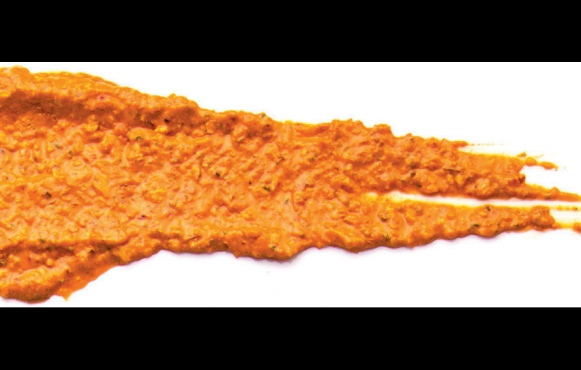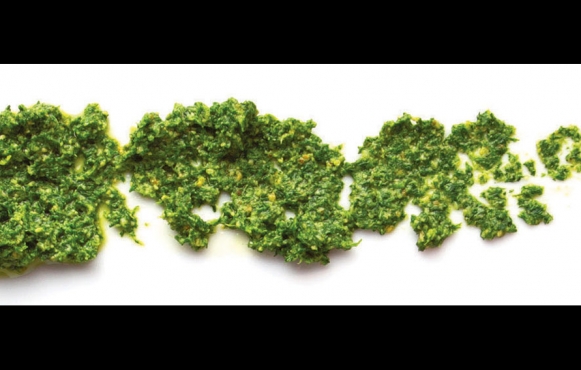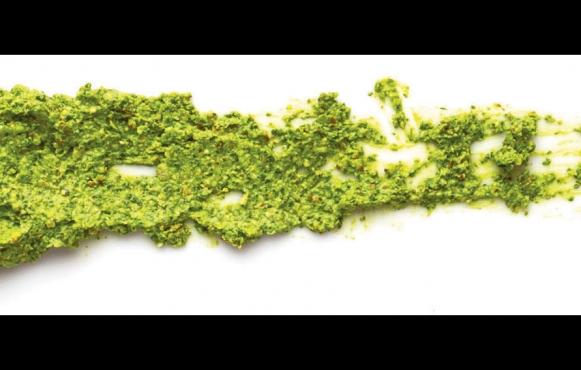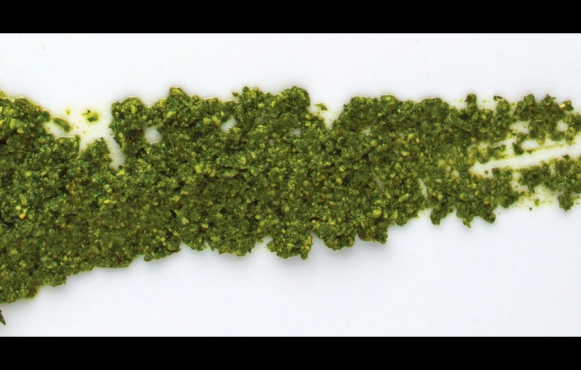Abracadabra Presto Pesto!
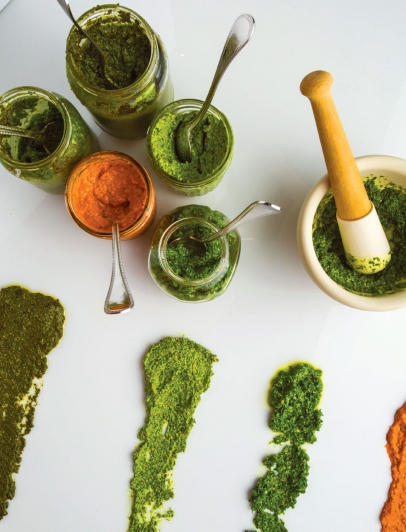
Fresh herbs are in season and abundant in our area right now so take advantage of these nearly calorie free, nutritious, flavor-packed edible plants by making big batches of pesto to use now and throughout the year.
If you’re not growing your own, you can find bunches of basil as big as a bridal bouquet for $2 at the farmers’ markets. Don’t waste your time with those paltry plastic-clamshell herbs from the grocery store. Along with herbs you can find local cheese, nuts, oils, garlic and vegetables to pep up your pesto.
Pesto means “to pound” or “to crush” and is traditionally made with Mediterranean pine nuts, garlic, basil, Parmigiano- Reggiano, Pecorino sardo and olive oil. Romans have been making pesto since ancient times using a mortar and pestle, crushing the ingredients in a circular motion until all ingredients are incorporated. We love traditional methods but modern technology makes pesto prep just a bit easier by using a food processor to make this delicious sauce.
Use pesto to toss with pasta, drizzle on grilled vegetables, slather on crusty bread, brush on grilled and roasted meats, stir into soup. Use it as a dip with crudité, a sandwich spread and to change up traditional hummus. The only limit is your culinary imagination.
The method of preparation for each of these pestos is the same. In a food processor, we like to grind the nuts first, add the remaining ingredients and process until smooth, adding the oil last in a slow, steady stream. Feel free to adjust the amount of olive oil for your intended use.
To blanch or not to blanch: You might choose to blanch your herbs to preserve their bright green color. If you plan to use the pesto right away, we don’t think blanching is necessary. If you plan on making it for future use, blanch away. The flavor isn’t affected either way.
Pesto will keep well for up to a week in the refrigerator and up to 6 months in the freezer. If making a pesto using green herbs, top it with a heavy layer of olive oil before storing to help preserve that gorgeous green color.
To preserve herbs for later use, simply chop them, mix with a generous amount of olive oil and freeze in ice cube trays. Pop them out as needed throughout the year to use in sautés, swirl in soups, for bread dipping, on roast meats and any number of other herby uses.
We especially love pesto on roasted corn and made our own “elote” corn by smearing it with pesto rouge and sprinkling with local feta. To roast the corn, soak whole unshucked ears in cool water for about an hour then place directly into charcoal embers for about 10–15 minutes, until husks are well blackened.


